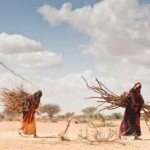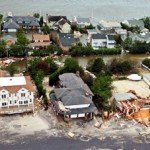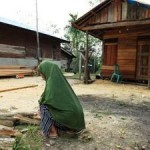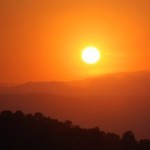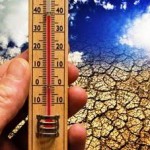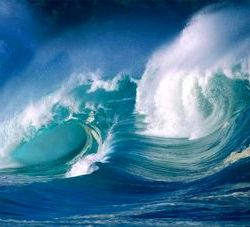
Geneva / Doha – The years 2001-2011 were all among the warmest on record, and, according to the World Meteorological Organization (WMO), the first ten months indicate that 2012 will most likely be no exception despite the cooling influence of La Niña early in the year.
WMO’s Provisional Annual Statement on the State of the Global Climate in 2012 also highlighted the unprecedented melt of the Arctic sea ice and multiple weather and climate extremes which affected many parts of the world. It was released on November 28 to inform negotiators at the United Nations Climate Change Conference in Doha, Qatar.
January-October 2012 has been the ninth warmest such period since records began in 1850. The global land and ocean surface temperature for the period was about 0.45°C (0.81°F) above the corresponding 1961-1990 average of 14.2°C, according to the statement.
The year began with a weak-to-moderate strength La Niña, which had developed in October 2011. The presence of a La Niña during the start of a year tends to have a cooling influence on global temperatures, and this year was no different. After the end of the La Niña in April 2012, the global land and ocean temperatures rose increasingly above the long-term average with each consecutive month. The six-month average of May-October 2012 was among the four warmest such periods on record.
“Naturally occurring climate variability due to phenomena such as El Niño and La Niña impact on temperatures and precipitation on a seasonal to annual scale. But they do not alter the underlying long-term trend of rising temperatures due to climate change as a result of human activities,” said WMO Secretary-General Michel Jarraud.
“The extent of Arctic sea ice reached a new record low. The alarming rate of its melt this year highlighted the far-reaching changes taking place on Earth’s oceans and biosphere. Climate change is taking place before our eyes and will continue to do so as a result of the concentrations of greenhouse gases in the atmosphere, which have risen constantly and again reached new records,” added Mr. Jarraud.
The Arctic reached its lowest annual sea ice extent since the start of satellite records on 16 September at 3.41 million square kilometers. This was 18% less than the previous record low of 18 September 2007. The 2012 minimum extent was 49 percent or nearly 3.3 million square kilometers (nearly the size of India) below the 1979-2000 average minimum. Some 11.83 million square kilometers of Arctic ice melted between March and September 2012.
WMO will release a 10-year report on the state of the climate, “2001-2010, A Decade of Extremes”, on 4 December 2012. It was produced in partnership with other United Nations and international agencies and highlights the warming trend for the entire planet, its continents and oceans during the past decade, with an indication of its impacts on health, food security and socio-economic development.
Highlights of 2012 Provisional Statement

Temperatures:
During the first ten months of 2012, above-average temperatures affected most of the globe’s land surface areas, most notably North America (warmest on record for contiguous United States of America), southern Europe, western and central Russia and north-western Asia. Much of South America and Africa experienced above average temperatures during the first ten months of the year, with the most anomalous warmth across parts of northern Argentina and northern Africa. Much of Asia had above-average temperatures, with cooler-than-average conditions across parts of northern China. South Asia and the Pacific were also predominantly warmer than normal, except for Australia.
Extremes:
Notable extreme events were observed worldwide, but some parts of the Northern Hemisphere were affected by multiple extremes during January-October 2012.
- Heat Waves: Major heat waves impacted the Northern Hemisphere during the year, with the most notable in March-May across the continental United States of America and Europe. Warm spells during March 2012 resulted in many record-breaking temperatures in Europe and nearly 15,000 new daily records across the USA. Russia witnessed the second warmest summer on record after 2010. Numerous temperature records were broken in Morocco in summer.
- Drought: According to the U.S. Drought Monitor, nearly two-thirds of the continental United States (65.5 percent) was considered to be in moderate to exceptional drought on 25 September 2012. Drought conditions impacted parts of western Russia and western Siberia during June and July, and Southeast Europe, the Balkans and some Mediterranean countries during summer. In China, the Yunnan and southwestern Sichuan province experienced severe drought during winter and spring. Northern Brazil witnessed the worst drought in 50 years. The April-October precipitation total, in Australia was 31 percent below normal.
- Floods: Many parts of western Africa and the Sahel, including Niger and Chad, suffered serious flooding between July and September because of a very active monsoon. Heavy rainfall from the end of July through early October prompted exceptional floods across Nigeria. Parts of southern China experienced their heaviest rainfall in the last 32 years in April and May. Devastating monsoonal floods impacted Pakistan during September. Central and parts of northern Argentina suffered from record rainfall and flooding in August, and parts of Colombia were affected by heavy precipitation for most of the year.
- Snow and Extreme Cold: A cold spell on the Eurasian continent from late January to mid-February was notable for its intensity, duration, and impact. Across eastern Russia, temperatures ranged between -45°C to -50°C during the end of January. Several areas of eastern Europe reported minimum temperatures as low as -30°C, with some areas across northern Europe and central Russia experiencing temperatures below -40°C.

